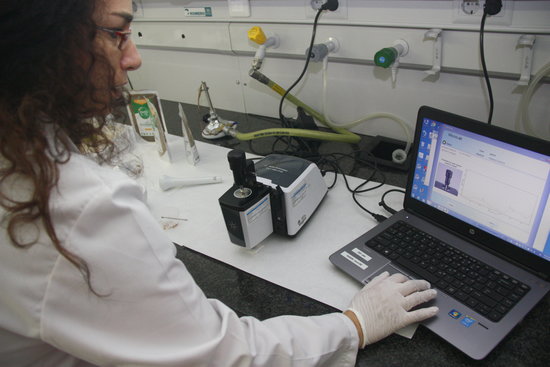The Catalan scientists who want us to eat bugs
Researchers at the URV university are studying ways of introducing insect protein into our daily diets

We are used to making sure we get out daily intake of greens, but insects are another matter. Yet, a group of researchers at Tarragona's Rovira i Virgili University (URV) is looking into how to go about introducing creepy crawlies into our diet.
Insects are high in protein and make ideal dietary supplements. Such insect protein supplements already exist on the market, aimed at elite athletes. Yet, finding a way to get the rest of society to consume such supplements is the challenge the researchers face.
Given the revulsion most people feel for bugs of all kinds, a key to successfully introducing the supplements is making sure they are imperceptible. This is done by turning grubs and beetles into a powder that can be combined with other ingredients.
Printing out food
The URV researchers are also using new technology in the shape of 3D printing, which can convert the mixture containing the insect protein into a recognizable food item, such as a cookie. The aim is to set up a company in a couple of years to sell the food.
Sílvia De Lamo is an associate professor in the university's chemical engineering department and heads a small team of researchers who are part of the Food, Innovation & Engineering research group, which is made up of seven people.
De Lamo and two researchers study the insects in a laboratory in ETSEQ (the Escola Tècnica Superior d'Enginyeria Química) on Tarragona's Sescelades Campus, where they have a small insect farm housed in cabinet drawers.
Which insect to choose?
Their research involves looking into how the chemical composition of the insects changes depending on the food they are given. This is useful for knowing what the insects should be like for use in creating the products for human consumption.
"Not all insects have the same amount of lipids and micronutrients, such as calcium, zinc and iron. We also have to know at which metamorphic stage it is best to eat them," says De Lamo.
The scientist says the protein content of insects is "quite high, over 50%,” which can translate into 25 grams out of every 100, which she adds, "can make it a very suitable product for sports people, and is meant to substitute products based on lactic protein.”
A growing sector
In fact, the introduction of such products has already begun. Some supermarkets sell powder made from certain types of grubs that can be used for seasoning, while in countries like the Netherlands the range of insect-based research and products is much wider.
There are already farms that produce insects meant for human consumption, and while De Lamo acknowledges that here we still lag behind other parts of the world, she says there is a real desire to grow further in this field.
At the URV, the researchers use 3D printers to create "new insect-based formulations to see if genuinely attractive formulas can be created," according to De Lamo, who adds that she believes 3D printers will become increasingly common in homes.
Detecting fraud
Another line of research is to develop a system for combating fraud. Given that the field of insect-based foods is still so young, consumers need to be assured that what they are eating is truly what they think it is.
"We have to develop techniques for avoiding fraud and adulteration, so we know exactly what species of insect we are using and in what concentration," says De Lamo, who says there are devices that can analyze chemical composition via a computer.
The authentication and certification of food is also an area that can potentially generate revenue, and the plan is for the URV to set up a spin-off company within the next couple of years, once the research has been completed.
With this type of initiative the university invests in setting up the firm and holds on to a percentage of its value, while the rest of the financing is contributed by the researchers behind the project.
"Having public finance helps us to generate resources to use, but we will also have to put money into it," says De Lamo. If the project goes ahead, the scientist would also like it to be involved in the design of the products, so as to produce and sell them.